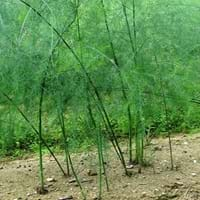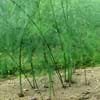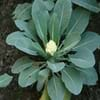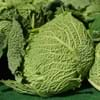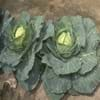Life Span
Perennial
Perennial
Type
Vegetable
Broadleaf Evergreen
Origin
Southern Europe, Mediterranean
China, Japan
Types
garden asparagus , Sprenger's asparagus fern, White asparagus
Heavenly Bamboo, Nandina 'Colerno'
Dwarf Nandina 'Compacta'
Dwarf Nandina 'Filamentosa'
Heavenly Bamboo, Nandina 'Harbor Belle'
Heavenly Bamboo, Nandina 'Moon Bay'
Habitat
Loamy soils, Well Drained
low mountains, Mountain tops, Mountains, Valley
USDA Hardiness Zone
4-8
6-11
AHS Heat Zone
8-1
Not Available
Sunset Zone
A1, A2, A3, 1a, 1b, 2a, 2b, 3a, 3b, 4, 5, 6, 7, 8, 9, 10, 11, 12, 13, 14, 15, 16, 17, 18, 19, 20, 21, 22, 23, 24
21,22
Habit
Not Available
Clump-Forming
Flower Color
White, Gold
Not Available
Flower Color Modifier
Bicolor
Bicolor
Fruit Color
Yellow green, Orange Red
Not Available
Leaf Color in Spring
Green, Dark Green
Green, Purple, Copper
Leaf Color in Summer
Green, Purple
Green, Purple
Leaf Color in Fall
Green, Purple
Green, Purple
Leaf Color in Winter
Not Available
Red, Green, Purple
Leaf Shape
Lanceolate
Acuminate
Plant Season
Spring, Summer, Fall
Spring, Summer, Fall, Winter
Sunlight
Full Sun
Full Sun, Partial Sun, Partial shade, Full Shade
Growth Rate
Not Available
Medium
Type of Soil
Loam, Sand
Loam, Sand
The pH of Soil
Neutral, Alkaline
Acidic, Neutral, Alkaline
Soil Drainage
Well drained
Well drained
Bloom Time
Late Spring, Early Summer, Summer
Not Available
Tolerances
Full Sun, Humidity, Shallow soil
Drought
Where to Plant?
Container, Ground
Ground
How to Plant?
Stem Cutting
Seedlings
Plant Maintenance
Medium
Medium
Watering Requirements
Keep the Soil well drained, Requires regular watering
Do not water frequently, Needs less watering
In Summer
Lots of watering
Lots of watering
In Spring
Moderate
Moderate
In Winter
Average Water
Average Water
Soil pH
Neutral, Alkaline
Acidic, Neutral, Alkaline
Soil Type
Loam, Sand
Loam, Sand
Soil Drainage Capacity
Not Available
Well drained
Sun Exposure
Full Sun
Full Sun, Partial Sun, Partial shade, Full Shade
Pruning
Cut away fading foliage
Remove damaged leaves, Remove dead branches, Remove dead leaves
Fertilizers
14-14-14 Fertilizer, 8-8-8, All-Purpose Liquid Fertilizer, organic fertlizers
All-Purpose Liquid Fertilizer
Pests and Diseases
Crown rot, Foliage miners, Fusarium wilt, Leaf rust, Mites, Red blotch, Thripes
Red blotch
Plant Tolerance
Full Sun, Heat Tolerance, Shallow soil
Drought
Flowers
Insignificant
Not Available
Flower Petal Number
Not Available
Not Available
Edible Fruit
Not Available
No
Fragrant Flower
Not Available
No
Fragrant Fruit
Not Available
No
Fragrant Leaf
Not Available
No
Foliage Texture
Fine
Fine
Foliage Sheen
Not Available
Glossy
Attracts
Beetles, Bugs, Fishes
Mealybugs, Whiteflies
Allergy
allergic reaction, Mouth itching, Phytodermatitis, Rhinoconjunctivitis
Not Available
Aesthetic Uses
Beautification, Showy Purposes
Bonsai, Borders
Beauty Benefits
Anti-ageing, Makes Hair Silkier, Promotes healthy skin
Not Available
Environmental Uses
Indoor Air Purification, Provides ground cover
Air purification
Medicinal Uses
Acne, Anemia, Menstrual Disorders, Nerve pain, Vitamin B, Vitamin E
Antirheumatic, Antitussive, Astringent
Part of Plant Used
Shoots, Stem
Fruits, Leaves
Other Uses
Air freshner, Employed in herbal medicine, Leaves are used as mosquito repellent, Used for making wood alcohol
Used for making informal hedge
Used As Indoor Plant
Sometimes
No
Used As Outdoor Plant
Yes
Yes
Garden Design
Edible, Herb / Vegetable
Container, Edging, Foundation, Groundcover, Hedges, Mixed Border, Topiary, Bonsai, Espalier
Botanical Name
ASPARAGUS officinalis 'Jersey Knight'
NANDINA domestica 'Nana Purpurea'
Common Name
Asparagus, Jersey Knight Asparagus
heavenly bamboo
sacred bamboo
nandina
In Hindi
शतावर
Dwarf Nandina
In German
Gemüsespargel
Dwarf Nandina
In French
Asperge
Nandina Dwarf
In Spanish
Asparagus
Nandina enana
In Greek
σπαράγγι
Dwarf Nandina
In Portuguese
Asparagus
Nandina do anão
In Polish
Szparag lekarski
Dwarf Nandina
In Latin
Asparagus
Dwarf Nandina
Phylum
Magnoliophyta
Tracheophyta
Class
Liliopsida
Magnoliopsida
Order
Asparagales
Ranunculales
Family
Liliaceae
Berberidaceae
Clade
Angiosperms, Monocots
Angiosperms, Eudicots
Tribe
Not Available
Not Available
Subfamily
Asparagoideae
Not Available
Number of Species
Not Available
Importance of Asparagus and Dwarf Nandina
Want to have the most appropriate plant for your garden? You might want to know the importance of Asparagus and Dwarf Nandina. Basically, these two plants vary in many aspects. Compare Asparagus and Dwarf Nandina as they differ in many characteristics such as their life, care, benefits, facts, etc. Every gardener must at least have the slightest clue about the plants he wants to plant in his garden. Compare their benefits, which differ in many ways like facts and uses. The medicinal use of Asparagus is Acne, Anemia, Menstrual Disorders, Nerve pain, Vitamin B and Vitamin E whereas of Dwarf Nandina is Antirheumatic, Antitussive and Astringent. Asparagus has beauty benefits as follows: Anti-ageing, Makes Hair Silkier and Promotes healthy skin while Dwarf Nandina has beauty benefits as follows: Anti-ageing, Makes Hair Silkier and Promotes healthy skin.
Compare Facts of Asparagus vs Dwarf Nandina
How to choose the best garden plant for your garden depending upon its facts? Here garden plant comparison will help you to solve this query. Compare the facts of Asparagus vs Dwarf Nandina and know which one to choose. As garden plants have benefits and other uses, allergy is also a major drawback of plants for some people. Allergic reactions of Asparagus are allergic reaction, Mouth itching, Phytodermatitis and Rhinoconjunctivitis whereas of Dwarf Nandina have Not Available respectively. Having a fruit bearing plant in your garden can be a plus point of your garden. Asparagus has showy fruits and Dwarf Nandina has no showy fruits. Also Asparagus is not flowering and Dwarf Nandina is not flowering . You can compare Asparagus and Dwarf Nandina facts and facts of other plants too.
